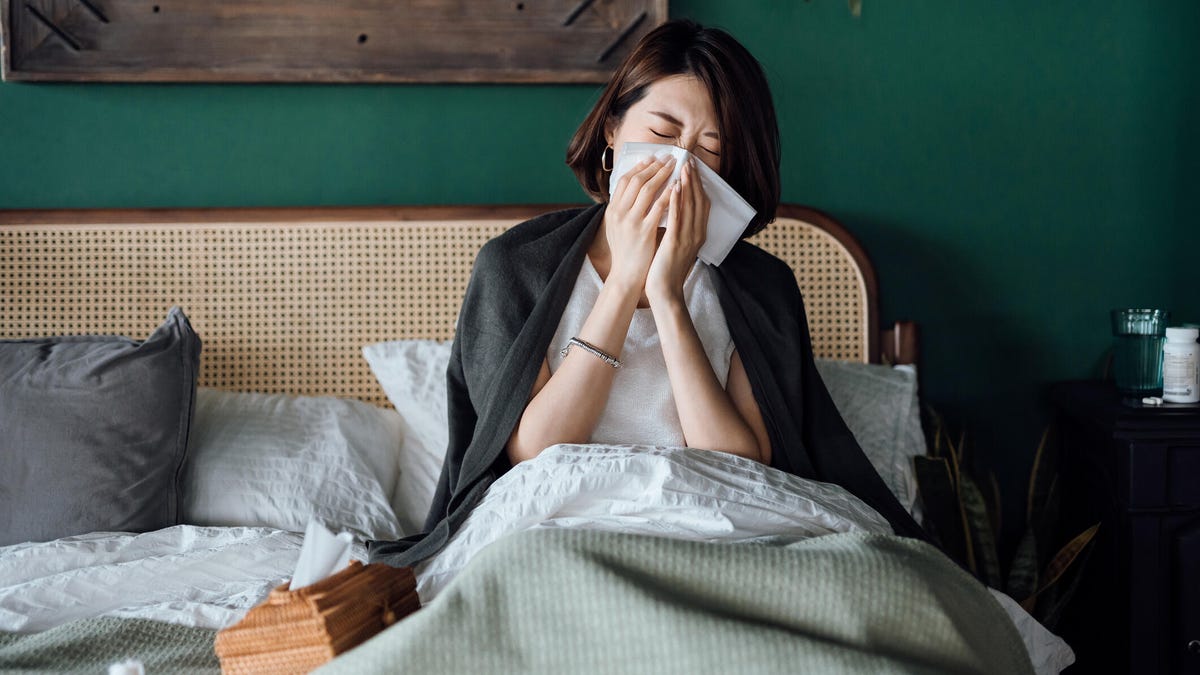 Why You Can Trust CNET
Why You Can Trust CNET Expert Tips to Transform Your Bedroom Into an Allergy-Free Sleep Haven
Allergies have no place in your bedroom as they can take a toll on your sleep. Here's how to clear them out.

Itchy eyes and runny nose? You're not alone. When allergies are at their peak, often it's easier to stay inside to avoid your triggers. Sometimes allergens can lurk in your home -- specifically, your bedroom.
Most people don't expect their bedroom to be the source of their allergies, but it happens. Spoiler alert: More often than not, it isn't the feathers in your pillows that you're reacting to. Here's what to know about allergies in the bedroom and what to do about them.
For more on allergies, see the sneaky signs you may have seasonal allergies and how to manage them this spring.
Can you be allergic to your bedding?
There are several potential allergy reactions to the different types of bedding. Although generally, true reactions to what your pillows and blankets are made of are rare. Potential sources of allergens include feathers, synthetic materials and dyes. These allergic reactions aren't common for the average person -- but they can happen. It happened to me.
So how do you distinguish between regular allergies and allergic reactions to bedding products? It can be difficult, but being mindful of when the symptoms begin can be a good place to start. If your allergies start to act up when you get in bed and lessen throughout the day, it may be your bedding (or what's in it).
Here's what I did to figure out what was causing my allergies:
1. I took note of when my symptoms started. It wasn't hard to figure out when I stopped sleeping well; it coincided with the introduction of the new pillows.
2. I ruled out other possibilities -- there was no new laundry detergent or perfumes. The only thing was the pillows and my inability to breathe.
3. Then I tested the theory. I removed the pillows from my bedroom and slept a few nights without them. My symptoms immediately improved.
4. I got the pillows as far away from me as possible.
If you're experiencing allergy symptoms in your bedroom and haven't introduced any new bedding, you're more likely reacting to dust mites or pet dander, both of which could be in your mattress and pillows.
Read more: Best Mattresses
Your mattress might be the source of your allergies
Mattresses collect everything from spills to skin cells to dust mites. If you aren't cleaning your mattress (don't worry, most people don't), your allergies may flare up in response to the buildup on your mattress.
You can't see dust mites. They are microscopic bugs that aren't visible to the naked eye. It's a little gross to think about, but they eat the dead skin we shed onto our pillows, sheets and mattresses. They're really common; roughly four out of five American homes have detectable levels of dust mites. Pretty much everyone has them, don't worry.
Dust mites can trigger allergies and asthma symptoms, including a runny or itchy nose, congestion, coughing, throat discomfort and trouble sleeping.
Here's what can you do to get rid of dust mites:
- Wash your bedding weekly.
- Vacuum regularly if you have carpet in your bedroom.
- Try dust-mite-proof covers on your mattress and pillows.
- Control the humidity in your bedroom. Not only will this help with dust mites that need humid air to thrive, but it'll also help with mold and mildew.
Read more: Best Organic Mattresses
Too long; didn't read?
Suppose you're having allergy flare-ups when you're sleeping. In that case, you may be reacting to dust mites, pet dander, feather pillows or synthetic materials. Nighttime allergies can have a serious impact on your ability to sleep. In addition to taking allergy medications, take the time to allergy-proof your room. Invest in a dehumidifier or dust-mite-proof covers to help ease discomfort.
If you aren't in the position to invest in any new tech or bedding like mattress toppers, just keep things clean. Wash your sheets regularly and vacuum as often as you can.

